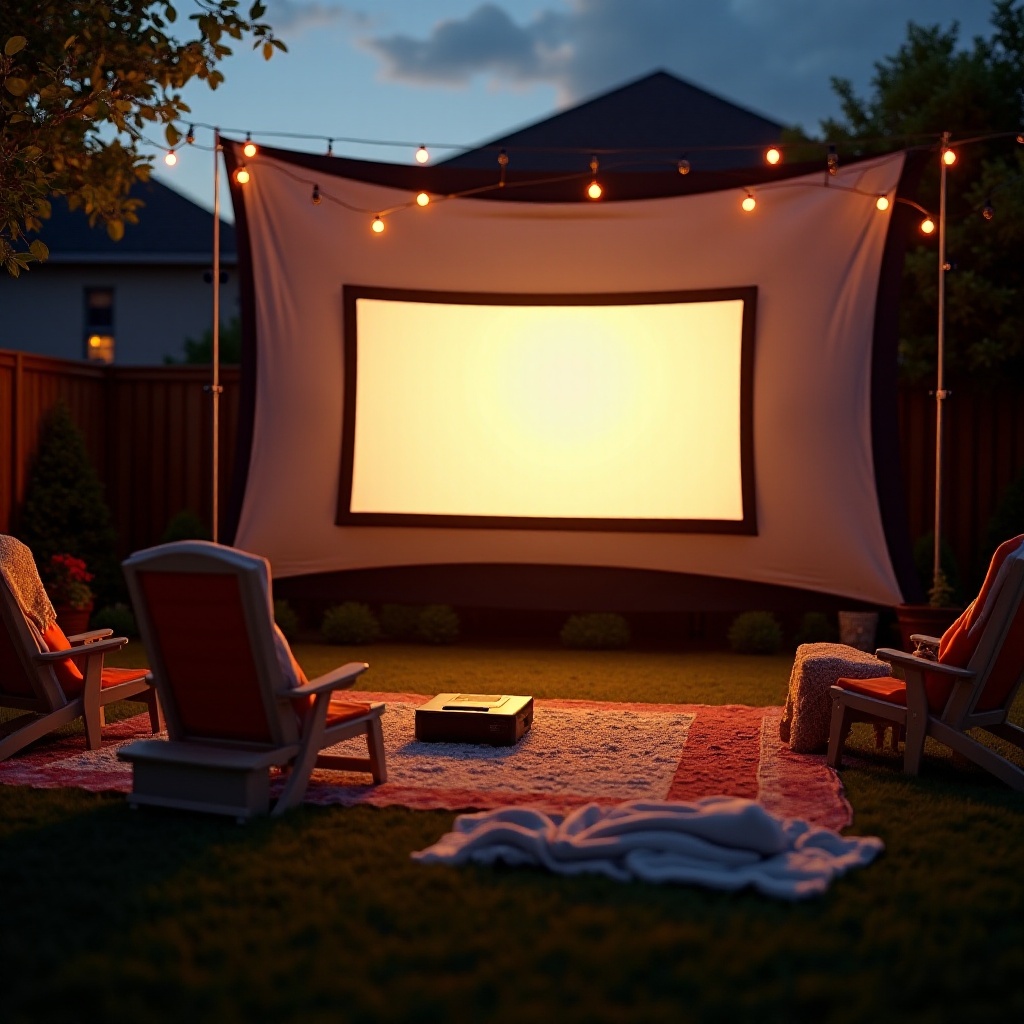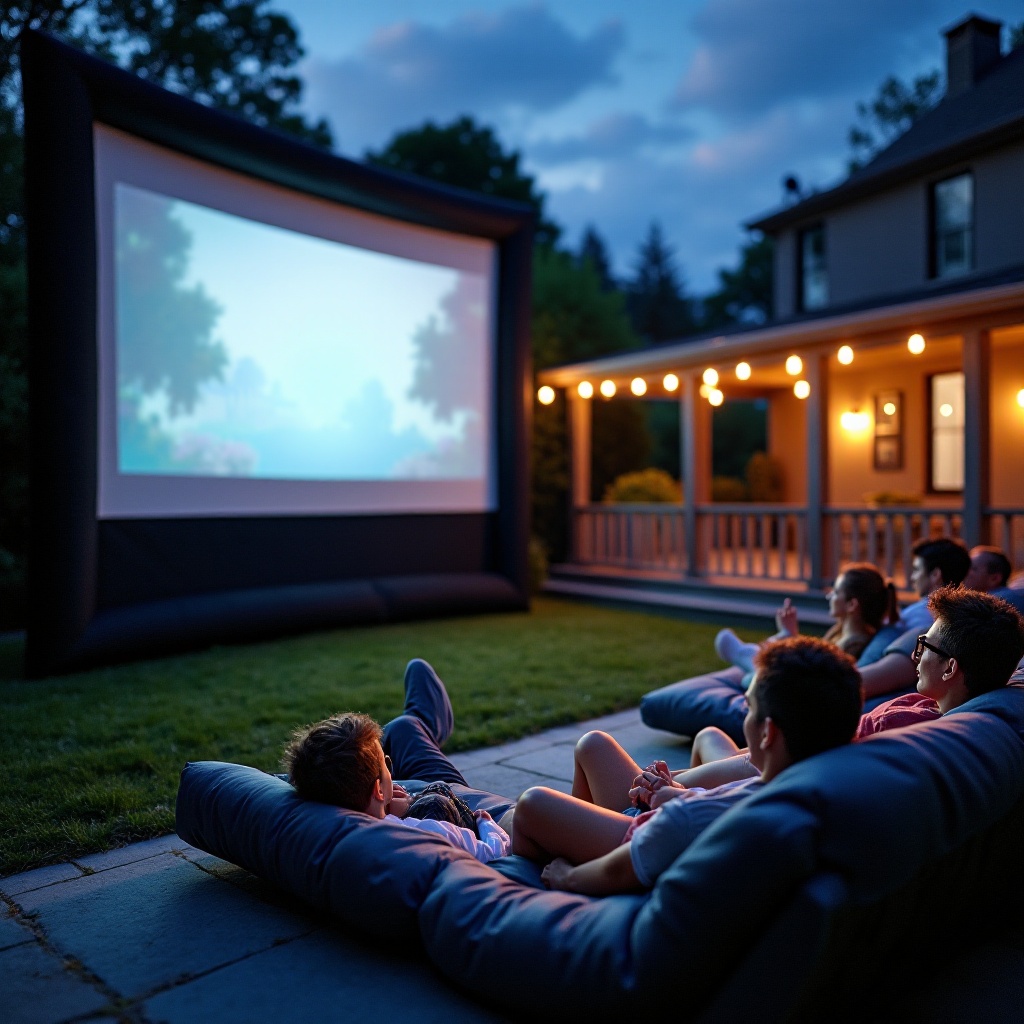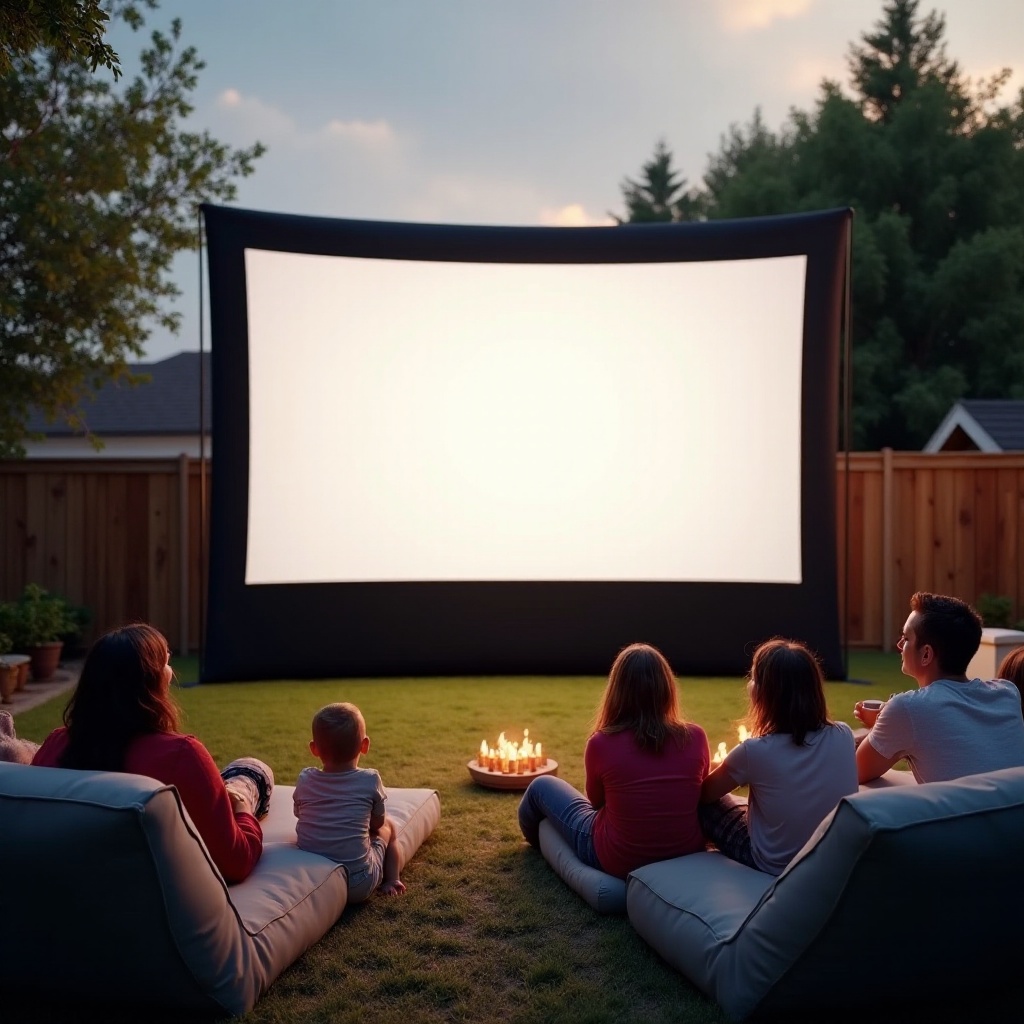Introduction
Setting up an outdoor movie screen can transform your backyard into an entertaining haven. Imagine enjoying your favorite films under the stars, surrounded by friends and family. The experience, however, hinges heavily on the choice of the right screen material. The quality of the material directly affects the visual and overall viewing experience. This guide will take you through the key considerations and the top materials suitable for outdoor movie screens, ensuring you make an informed decision.

Key Factors to Consider When Choosing Outdoor Movie Screen Material
Reflectivity and Luminosity
One of the foremost factors is reflectivity. A good screen should reflect light efficiently to give you a bright, clear image. Luminosity, the measure of the brightness of the reflection, should be balanced, avoiding an overly bright or a dull display. Reflectivity helps in making the picture sharp and colorful, enhancing the viewing experience.
Durability in Different Weather Conditions
An outdoor screen faces various environmental challenges—rain, wind, and even direct sunlight. Materials must be durable enough to withstand these conditions without degrading quickly. Your selected material should be waterproof, UV resistant, and strong enough to handle wind to a certain extent without tearing or wearing out.
Ease of Installation and Maintenance
Ease of installation and maintenance is another key aspect. You want a screen material that can be set up with minimal hassle and maintained without requiring excessive effort. If the material is easy to clean and store, it adds to the longevity and usability of your outdoor movie setup.
Top Materials for Outdoor Movie Screens
Canvas
Canvas is a popular choice due to its excellent durability and decent reflectivity. It can withstand various weather conditions, making it suitable for outdoor use. The heavy-duty nature of canvas provides stability and reduces the risk of tearing. However, it must be stretched tightly to avoid wrinkles that can distort the image.
PVC
PVC screens are favored for their higher reflectivity and water-resistant properties. They are often used for professional outdoor screens because they offer a superior image quality with vibrant colors and clear picture quality. However, they can be heavier and slightly more challenging to install compared to fabric options.
Inflatable Screens
Inflatable screens offer convenience and portability. They can be quickly inflated and deflated, making them ideal for temporary setups. While the image quality can be good, it’s essential to ensure that the material is puncture-resistant and able to withstand outdoor conditions.
Blackout Cloth
Blackout cloth is known for its excellent light-blocking properties. It is widely used because it enhances contrast and provides a clear image even in areas with ambient light. The material is thick and durable, capable of holding up against various weather conditions, and relatively easier to clean.
Outdoor Fabric
Outdoor fabric, specially designed for external conditions, can be another viable option. This type of fabric is UV-resistant and water-repellant, ensuring durability. While it may not provide the same level of image quality as PVC, it offers a good balance between performance and weather resistance.
Material Comparison Based on Projector Types
When selecting a material, it’s important to consider the type of projector you have. Different materials work better with LCD or DLP projectors, each providing unique benefits that cater to specific needs.
Compatibility with LCD Projectors
LCD projectors tend to work well with materials that offer high reflectivity. PVC and blackout cloth materials are typically more suitable for LCD projectors as they can enhance the bright, vivid images these projectors are known for. Smoother surfaces are preferred to avoid any reduction in image quality.
Compatibility with DLP Projectors
DLP projectors require a screen that offers excellent color reproduction and high brightness. Canvas and outdoor fabric tend to work better with DLP projectors. These materials help in reducing the rainbow effect associated with DLP projectors, giving a crisper picture.

Custom Solutions: DIY Screen Materials
For those who enjoy DIY projects, creating a custom outdoor movie screen can be both fun and cost-effective. A smooth white wall or a well-stretched bed sheet can serve as a makeshift screen. However, for better quality, using materials like canvas or blackout cloth can yield superior results.
Expert Recommendations and Testimonials
Professionals in the home entertainment industry often recommend PVC for its exceptional image quality and durability. Testimonials from regular outdoor movie enthusiasts also highlight the reliability of blackout cloth, emphasizing its ability to provide clear and bright images consistently.

Conclusion
Choosing the best material for an outdoor movie screen hinges on understanding your specific needs and conditions. Reflectivity, durability, and ease of maintenance are critical factors to consider. Top materials like PVC, canvas, and blackout cloth come highly recommended for their robust qualities and excellent performance, ensuring your outdoor movie nights remain enjoyable and memorable.
Frequently Asked Questions
What is the most durable material for outdoor movie screens?
PVC is among the most durable materials due to its high resistance to weather conditions and excellent longevity.
Can I use a white sheet as a DIY outdoor movie screen material?
Yes, a white sheet can be used as a DIY screen, though it may not offer the best image quality. For a better experience, consider using canvas or blackout cloth.
How do I maintain my outdoor movie screen to ensure longevity?
Regular cleaning and proper storage when not in use are essential. For materials like PVC, wiping down with a damp cloth is often sufficient. For fabrics, ensure they are dry before storing to prevent mold and mildew.

